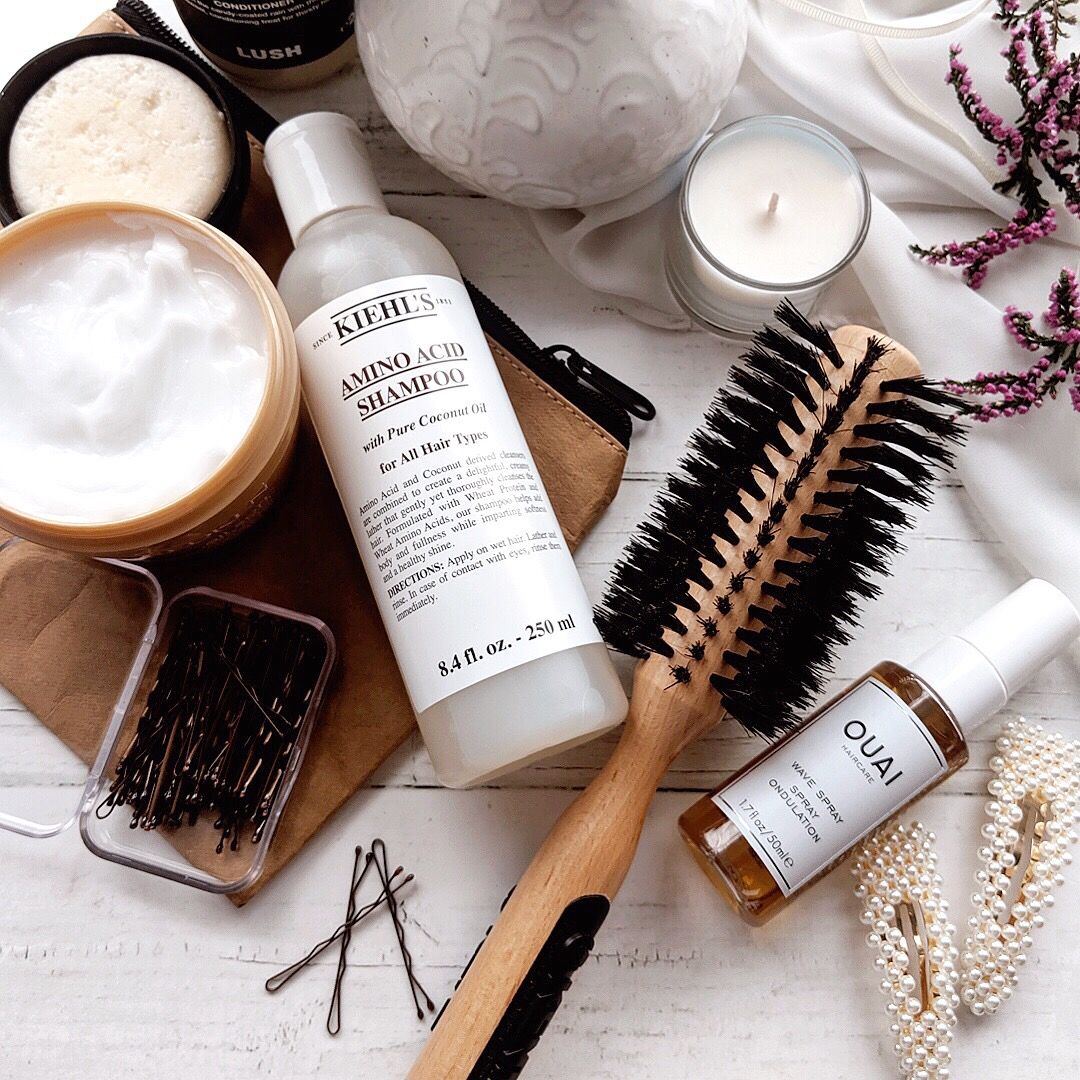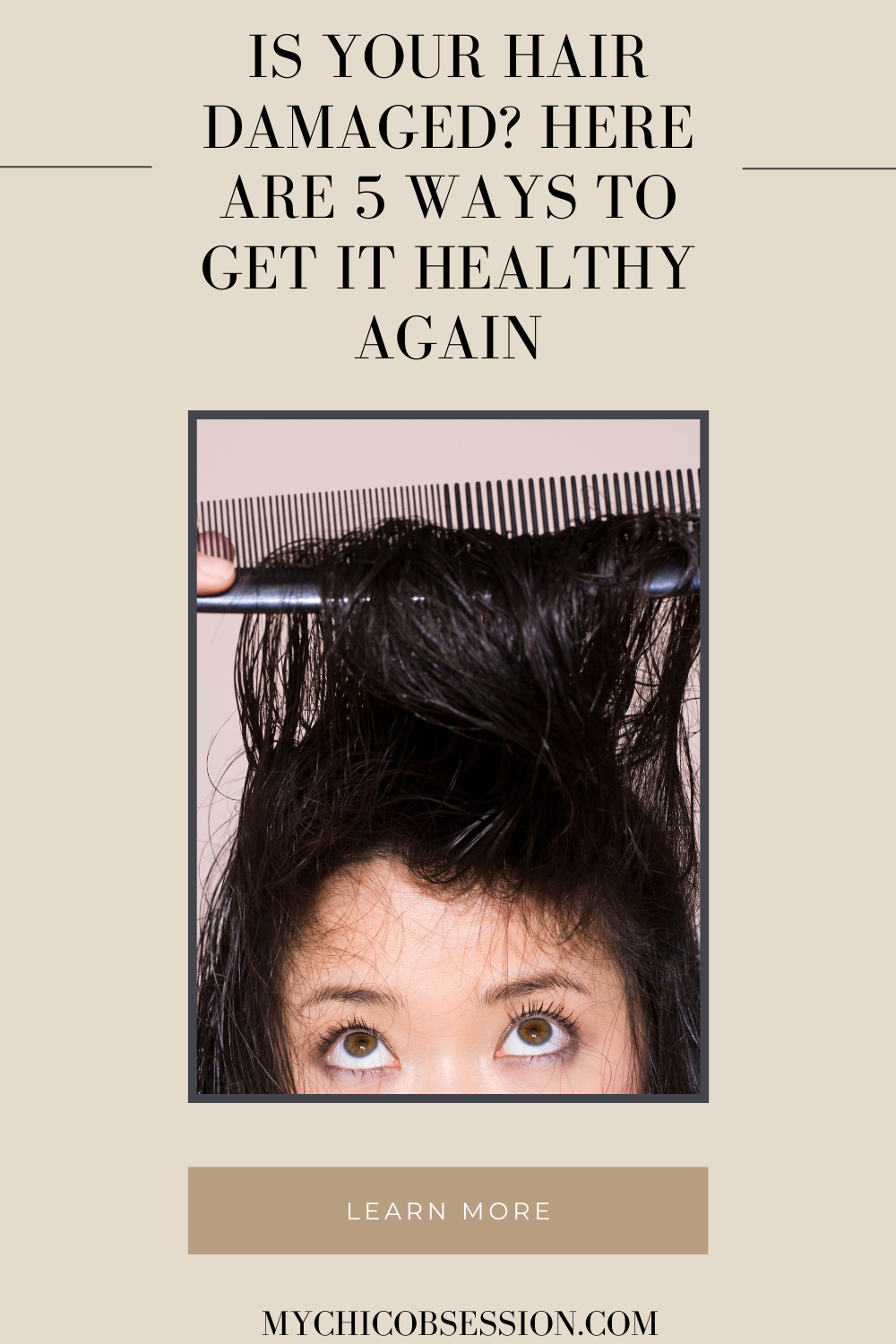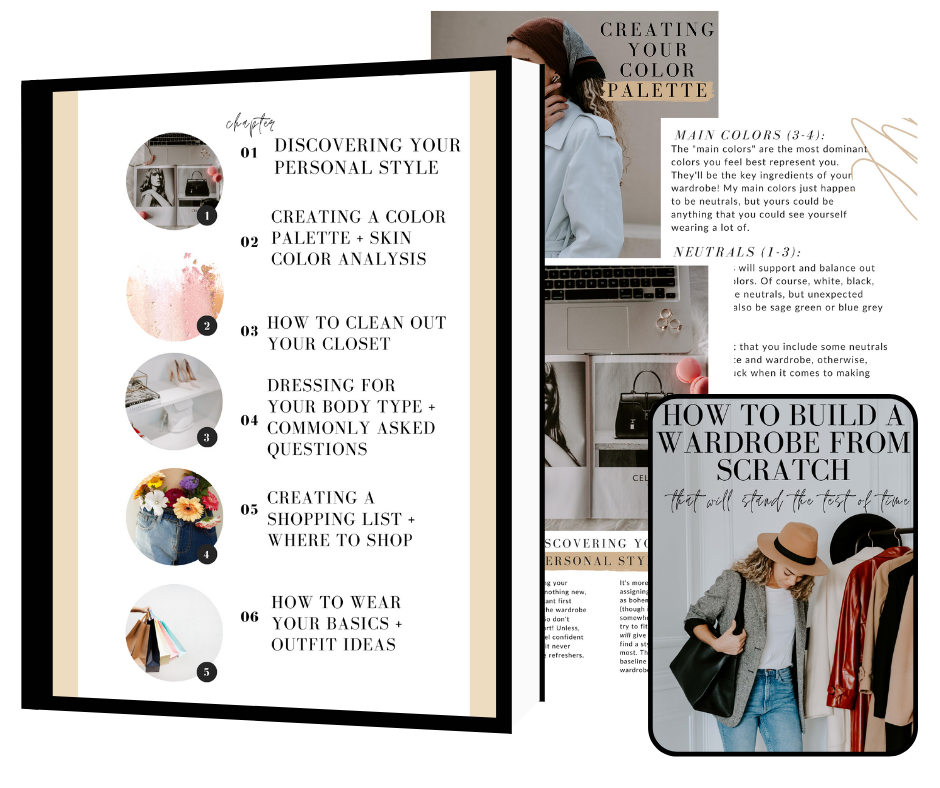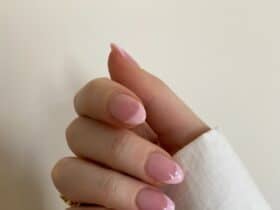Please note that this post may contain affiliate links and any sales made through such links will reward us a small commission – at no extra cost for you.
It’s inescapable at times- hair damage that is. All hair suffers damage from hot styling tools, pollution, and everyday styling, just to name a few culprits. We won’t ever be able to bypass damage to our hair altogether, so how do we deal with it and keep it to the bare minimum? Keep reading to find out 5 ways to get your damaged hair back on track and healthy again.

1. Cut Off All the Damage
Let’s just get the most unpopular one out of the way first, which is cutting off all your damaged hair. Some of you have a ton of damage and are probably worried you won’t have any hair left if you did this. I know this because I’ve been there.
I will say this-it’s always more traumatic in our heads than the end result ever turns out to be. With that being said, there is another option.
Instead of cutting it all off at once, you can have your hair stylist cut off a couple of inches of damage each visit.
Though I will say that I’ve done it both ways and the best way is to take off all the damaged hair at once. Yes, there are a lot more tears this way, but doing this allowed me to start rebounding my hair that much quicker.
Because here’s the thing- damaged hair will never produce healthy hair. Damaged hair only produces further damage. Once I figured this out, it made cutting off all the damage seem like a no-brainer.
Once the cut was done I felt so free-like I could start fresh again and all of a sudden, the hair possibilities were endless. This is one of the best things you can do to make damaged hair grow.
Still deciding whether or not you should make the cut? The good news for those still on the fence is that all hair grows back.
After that transformative hair cut, I dove deep into YouTube and really learned about healthy hair growth, how to take care of my hair, and using the right hair products so this would never happen again.
2. Figure Out Your Hair Porosity
Learning about hair porosity was the best thing that ever happened to me and the number one thing that changed the hair game for me.
What is hair porosity? It’s your hair’s ability to maintain moisture. That’s it. But it is so, so important.
There are three types: high, mid, and low. The porosity of your hair will determine what hair care products will actually work for you. Have you tried a bunch of products that just never seemed to work?
Maybe they didn’t work because it was the wrong product for your hair porosity. To get the best results for healthy hair, you will need to find out what porosity level you are. The video below is great for explaining hair porosity more in-depth and determining your level.
3. Add Deep Conditioning to Your Routine
There are two types of deep conditioners: one that adds moisture and one that adds protein to your hair. Both are absolutely necessary if you are trying to get your damaged hair back on track.
Your porosity will determine how often you will apply each. The nice thing about deep conditioning is that in addition to applying it during the day, you can apply it before bed, sleep with it in, and shower it out in the morning.
When deep conditioning, make sure you begin with damp hair or even wet hair and section it off. Sectioning it off allows you to make sure all your hair is getting touched and not just the top and bottom parts.
When applying deep conditioner to your sectioned hair, it’s a good idea to comb out each section with a wide-tooth comb or tangle teezer brush. Adding these deep conditioners to your hair care routine will dramatically change the health of your hair follicles.
Now let’s talk about the two different kinds of deep conditioners:
Moisture
Adding moisture to your hair helps improve hair elasticity. The better your hair elasticity the more it can resist stretching and tension. It doesn’t matter the hair type, all hair needs moisture.
Dry hair does grow but it just takes longer, so it’s in your best interest to keep your hair as moisturized as possible. Depending on how dry your hair is, I would recommend deep conditioning 1-2 times a week.
So how can you tell if your hair needs moisture? Do you have frizzy hair, rough hair, or a ton of split ends? Does your hair easily get tangled and can’t hold a curl? These are all signs you need moisture.
Finding out your hair porosity will determine the thickness of creams you will use. I’m low to mid porosity so I generally stay away from thicker creams and embrace the lighter ones.
Related: 6 Curly Brunette Hairstyles to try if You Are in a Hairstyling Rut
Protein
Adding protein to your hair is just as important as adding moisture. Think of moisture as the water you drink and protein as the food you eat. You need both to survive. Your hair needs both to grow healthy as well.
There are a ton of benefits to adding protein to your hair. Not only does it strengthen your hair shaft but it prevents damage, breakage, and shedding.
So how can you tell if your hair needs protein? Is your hair limp, stringy, or shedding? Then it’s time to add some protein.
I think everyone should do a deep protein treatment once a month and maintain with strengthening deep conditioners after that. This is the deep protein treatment I recommend.
4. Rethink Your Hair Styling
An area most people might not think leads to hair damage (but definitely does) is how you are styling your hair. Tight hairstyles cause hair breakage. The constant tension causes the hair to become weak which leads to damaged hair follicles which can eventually lead to hair loss.
Another area causing damage is consistently using hot tools. Do you use a curling iron, hair dryer, or flat iron? Hair dryers are a great invention but at what cost? Using these heat styling tools every day is leading to dry hair, brittle hair, and overall just damaging the health of your hair.
I know it might be hard to give them up, so a great first step would be using the heat tools only on days you go into the office. Take the weekend off. I bet once you start seeing healthier hair you will want to cut back even more.
5. Don’t Forget Maintenance
When it comes to making damaged hair grow, another part of maintaining healthy hair that you can’t neglect is getting regular trims. Getting your hair trimmed regularly is key for keeping the damage at bay. Sounds counterintuitive, but it works.
Every head of hair is different so you will see what works for you over time and that will become your routine. My hair doesn’t need to be trimmed often so I go once every four months.
Once you’ve got the basic maintenance down, you can branch out and try fun things. I love a good scalp scrub or hair mask that gives me extra shiny hair.
If at-home treatments and natural ingredients are more your things, there are a ton of recipes on the internet that include coconut oil, olive oil, apple cider vinegar, and many other excellent ingredients to make hair treatments out of.

Though damaged hair may seem daunting, don’t be discouraged, it can be fixed! Follow these 5 steps on how to make damaged hair grow and soon your hair will be shiny and healthy again.
Repairing damaged hair is just one way you can look your best every day. For 9 other ways (that are easier than you think), keep reading!
Up Next: What Do People Do To Look Their Best Every Day?














Leave a Reply